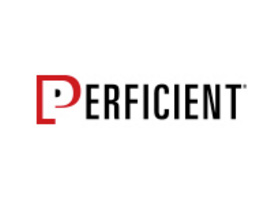This is the final segment of a 6 part series. Part I introduced the concept of analytically measuring the performance of delivery teams. In Part II – We talked about how Agile practices enhance our ability to measure more accurately and more often. Part III defined a system model for defining 3 dimensions of performance […]
Posts Tagged ‘agile’
BI Tools – Testing with DBFit
During work on our in-house lightweight metadata repository (MDR), I’ve started to use DBFit for database acceptance testing and have been pleasantly surprised at the simplicity of the tool and its ability to deliver on its promise of low entry cost testing. DBFit is a part of FitNesse, itself an implementation of the FIT acceptance […]
Measuring the Performance of Delivery Teams (Part V Productivity)
This is Part V in a multi-part series. Part I introduced the concept of analytically measuring the performance of delivery teams. In Part II – We talked about how Agile practices enhance our ability to measure more accurately and more often. Part III defined a system model for defining 3 dimensions of performance (Predictability, Quality […]
What makes a good unit test?
We have team members who attended a Boot Camp where they learned skills such as how to write a unit test. They are very smart and created a lot of unit tests for their code. We use unit test coverage rates to judge the quality of unit tests. The boot camp team got a 87.5% […]
Measuring the Performance of Delivery Teams (Part IV – Quality)
This is Part IV in a multi-part series. In Part I – We introduced the concept of analytically measuring the performance of delivery teams. In Part II – We talked about how Agile practices enhance our ability to measure more accurately and more often. In Part III – We introduced a system model for defining […]
Contract Models of Multi-shore projects (I) – Fixed Price
Although agile software development methodologies value customer collaboration more than contract negotiations, it does not mean that contracting is not important. In fact, proper contracting is critical to the success of a project (especially for multi-shore projects). Many projects become “Death March” because of inappropriate contracting. If we look into the business of software offshore […]
Measuring the Performance of Delivery Teams (Part III)
This is Part III in a multi-part series. In Part I – We introduced the concept of analytically measuring the performance of delivery teams. In Part II – We talked about how Agile practices enhance our ability to measure more accurately and more often. In this part, we’ll talk about “Which Dimensions are Most Important […]
What’s wrong with our development environment?
It’s very common nowadays to use multiple tools in our development environment, we use: Subversion for version control Sonar for static analysis Selenium for web testing automation Hudson for continuous integration Maven for build management etc.
Some Tips about Risk Management
Risk Management is important in projects as everybody understands, while sometimes it still could be ignored by the project managers especially those who just start the role. The project team should have all the dependencies listed for tracking and monitoring, while that’s not enough, mitigation to the risk of those dependencies not being solved […]
Why we need the SPC in Scrum project team
Measurement is difficult to carry out in the agile engineering and management process. However, in practical activities, developers have been trying to use measurement to manage and monitor their own projects. Measurement of software features helps developers to understand the software requirements consistently and completely, to know the actual quality extent and to make sure […]
Visualizing requirements – by Diego Zhong
Recently I acted as the product owner (PO) of a system which is about resource/training management. The complexity of the system is moderate as there are less than 10 pages and over hundred of business rules. Since I could only spend about one hour each day in elaborating the requirements of the system, I did […]
Measuring the Performance of Delivery Teams (Part II – Agile)
How Agile methodology can enable more accurate and timely measurement Not surprisingly, development organizations that operate with a truly Agile methodology, tend to have far more meaningful, quantitative and frequent measurements of their operational performance than those using more classical (i.e. waterfall) methodologies. That isn’t to say that practitioners of waterfall methodology don’t generate a […]
